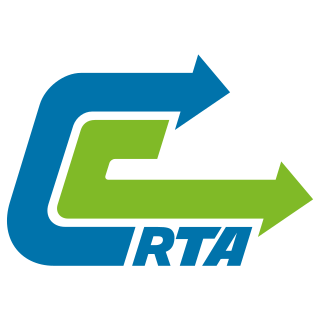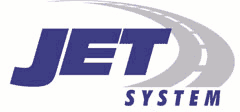
C-Tran, more formally the Clark County Public Transit Benefit Area Authority, is a public transit agency serving Clark County, Washington, United States, including the cities of Battle Ground, Camas, Vancouver, Washougal, and Yacolt. Founded in 1981, C-Tran operates fixed route bus services within Clark County, as well as paratransit services for qualified persons with disabilities (C-Van) and a dial-a-ride service in Camas, Ridgefield, and La Center. C-Tran also provides express commuter services between Clark County and Downtown Portland, Oregon and regional services to the Parkrose/Sumner and Delta Park MAX Light Rail stations, and Oregon Health and Science University. In 2023, the system had a ridership of 4,738,700, or about 16,000 per weekday as of the second quarter of 2024.
The Sacramento Regional Transit District, commonly referred to as SacRT, is the agency responsible for public transportation in the Sacramento, California area. It was established on April 1, 1973, as a result of the acquisition of the Sacramento Transit Authority. In addition to operating over 81 bus routes with connecting bus service in the Sacramento area covering 438 square miles (1,134.4 km2), SacRT also operates a large light rail system, which ranks currently as the sixteenth busiest light rail system in the United States. In 2023, the system had a ridership of 15,836,400, or about 54,500 per weekday as of the second quarter of 2024.

Embark is the public transit agency of the COTPA trust, the largest transit agency in the state of Oklahoma. Embark has 20 interconnecting bus routes covering the city of Oklahoma City and parts of the Oklahoma City Metropolitan Area, including weekday Express service from Norman to Downtown Oklahoma City. Embark also operates paratransit, the Oklahoma City Streetcar, downtown public parking, bike share, and river ferry services. Additionally, Embark provides administrative and executive support for the Regional Transportation Authority of Central Oklahoma.

The Rhode Island Public Transit Authority (RIPTA) provides public transportation, primarily buses, in the U.S. state of Rhode Island. The main hub of the RIPTA system is Kennedy Plaza, a large bus terminal in downtown Providence, Rhode Island. Average daily ridership as of the second quarter of 2024 is 43,400. The agency operates 59 fixed-route bus routes and 7 demand-responsive routes, together serving 37 out of 39 Rhode Island municipalities.

The Delaware Transit Corporation, operating as DART First State, is the only public transportation system that operates throughout the U.S. state of Delaware. DART First State provides local and inter-county bus service throughout the state and also funds commuter rail service along SEPTA Regional Rail's Wilmington/Newark Line serving the northern part of the state. The agency also operates statewide paratransit service for people with disabilities. DART First State is a subsidiary of the Delaware Department of Transportation (DelDOT).

The Clayton County C-TRAN was a bus transportation system in Clayton County, Georgia, USA, that ran from 2001 to 2010. C-Tran was run by the Georgia Regional Transportation Authority (GRTA) to manage the local bus system, linking bus routes to MARTA, the Hartsfield-Jackson Atlanta International Airport, and major commercial and academic centers in the county. C-Tran's bus fleet was powered by compressed natural gas. Due to budget shortfalls, C-Tran ended service on March 31, 2010.

Cape Cod Regional Transit Authority (CCRTA) operates a bus transit system of fixed and flexible routes, seasonal rail service to Boston, and a paratransit service in the Cape Cod region of Massachusetts. The CCRTA was created under the provisions of Chapter 161B of the Massachusetts General Laws in 1976. Its main hub and base of operations is the Hyannis Transportation Center on Main Street in Hyannis, Massachusetts.

San Joaquin Regional Transit District is a transit district that provides bus service to the city of Stockton, California and the surrounding communities of Lodi, Ripon, Thornton, French Camp, Lathrop, Manteca, and Tracy. In 2023, the system had a ridership of 2,432,000, or about 9,300 per weekday as of the second quarter of 2024.

Birmingham-Jefferson County Transit Authority (BJCTA) is the public transportation operator in the city of Birmingham, Alabama and surrounding areas. Created in 1972 to take over transit operations from private operators, it operates 109 buses on 38 routes. It also operates paratransit services, as well as micro transit services. In 2023, the system had 1,792,000 rides, or about 6,900 per weekday as of the second quarter of 2024.

The Norwalk Transit District (NTD) is the primary provider of public transportation services in Norwalk, Connecticut, United States, and surrounding communities. The local Norwalk fixed-route bus transit system, is the primary service of the district linking Norwalk and its immediate suburbs. The agency also operates regional bus service as far east as Milford and commuter shuttles to Metro-North stations.

Marin Transit is a public bus agency in Marin County, California, in the United States. Originally formed in 1964 as Marin County Transit District (MCTD), Marin Transit was re-branded on July 30, 2007 and now provides a variety of fixed-route and demand-response public transportation services. In 2023, the system had a ridership of 2,814,700, or about 9,000 per weekday as of the second quarter of 2024.

Brockton Area Transit Authority, branded as Brockton Area Transit (BAT), is a public, non-profit organization in Massachusetts, charged with providing public transportation to the Brockton area, consisting of the city of Brockton and the adjoining towns of Abington, Avon, East Bridgewater, Easton, Milton, Randolph, Rockland, Stoughton & West Bridgewater.

Berks Area Regional Transportation Authority (BARTA), previously Berks Area Reading Transportation Authority, is a public transportation system serving the city of Reading and its surrounding area of Berks County, Pennsylvania. The South Central Transit Authority owns BARTA and the Red Rose Transit Authority (RRTA). In 2023, the system had a ridership of 2,276,000, or about 14,600 per weekday as of the second quarter of 2024.

The MetroWest Regional Transit Authority (MWRTA) is a regional public transit authority in the state of Massachusetts providing bus and paratransit service to sixteen communities in the Boston MetroWest. The MWRTA was formed in 2006 and began service on July 1, 2007, with the purpose of filling a void in public transportation service in the MetroWest. Through a commitment to deliver expanded public transportation service to the business and commercial hubs across the MetroWest region, the goals and purpose of the MWRTA are embodied in its mission statement: "Build a public transportation system to deliver convenient and dependable service that enhances mobility, environmental quality and economic vitality in the region." Funding for the MWRTA comes partially from the state and local governments of the communities it operates within.

Rock Region Metropolitan Transit Authority, is the largest transit agency in Arkansas. It was formerly known as the Central Arkansas Transit Authority. Rock Region Metro provides public transportation services within Pulaski County, Arkansas, seven days a week.

Mountain Metropolitan Transit (MMT) is the primary public transportation operator for the Colorado Springs metropolitan area. It provides bus service between Colorado Springs, Manitou Springs, and Security-Widefield. There are currently thirty-four local routes. In 2023, the system had a ridership of 2,991,300, or about 9,200 per weekday as of the second quarter of 2024.
Fort Smith Transit is the primary provider of mass transportation in Sebastian County, Arkansas. Fix routes are operated Monday through Saturday on an hourly schedule with two timed-transfer points. One additional route operates Monday through Friday and has a timed-transfer point with one other route.
The Brazos Transit District, branded as The District, is the primary provider of mass transportation in a 16-county area of East Texas. The agency was established in 1974 as the Brazos Valley Transit Authority, with the primary purpose of providing fixed routes for Bryan and College Station, plus rural demand response service. Today, two separate urban areas feature fixed routes, Paratransit, Demand and Response plus a series of commuter buses for several Houston suburbs. In 2023, the system had a ridership of 354,400, or about 1,500 per weekday as of the second quarter of 2024.
Pine Bluff Transit is the primary provider of mass transportation in Pine Bluff, Arkansas with eight routes serving the region. As of 2019, the system provided 60,572 rides over 16,038 annual vehicle revenue hours with 4 buses and 2 paratransit vehicles.















